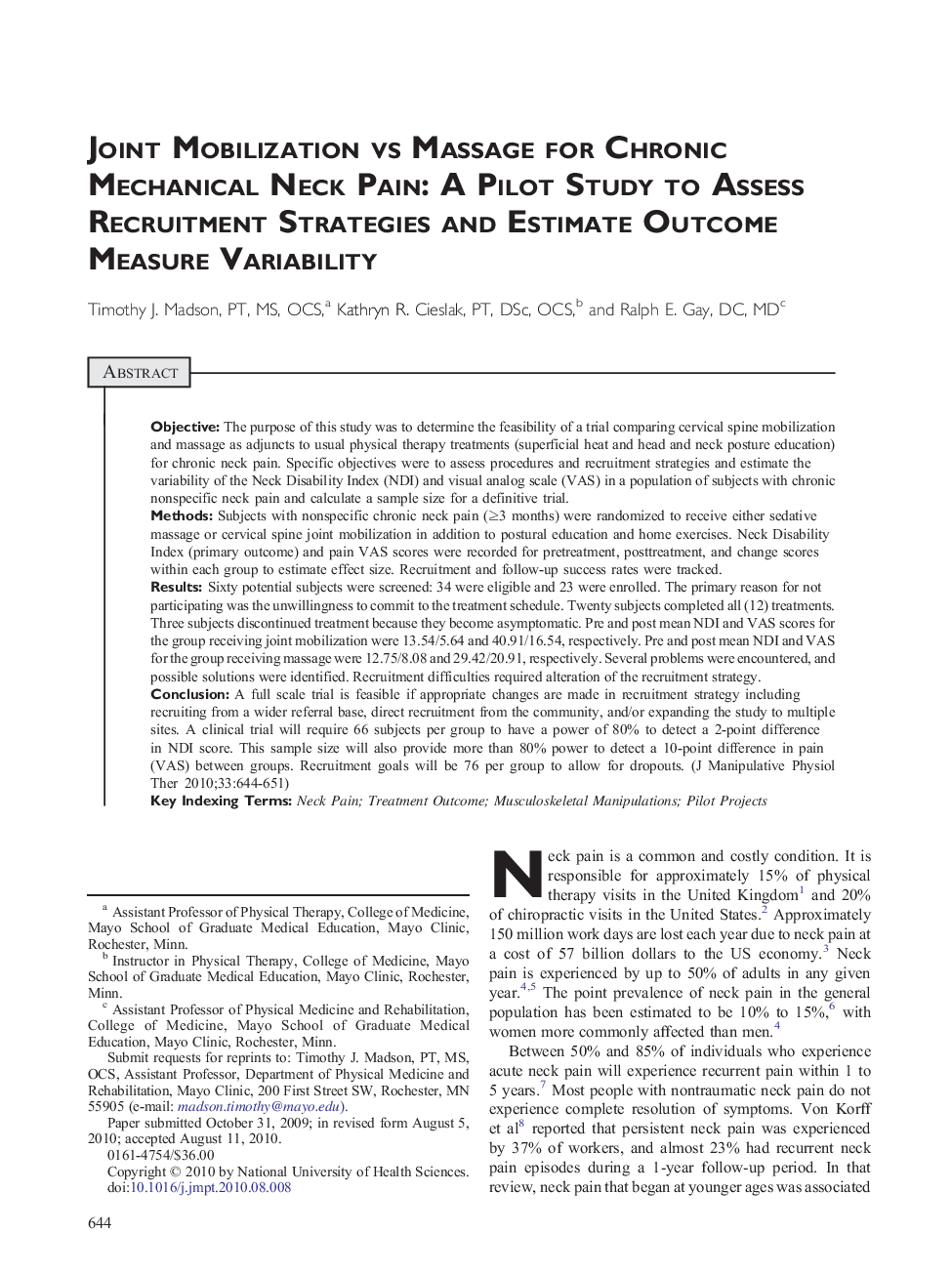| Article ID | Journal | Published Year | Pages | File Type |
|---|---|---|---|---|
| 2620797 | Journal of Manipulative and Physiological Therapeutics | 2010 | 8 Pages |
ObjectiveThe purpose of this study was to determine the feasibility of a trial comparing cervical spine mobilization and massage as adjuncts to usual physical therapy treatments (superficial heat and head and neck posture education) for chronic neck pain. Specific objectives were to assess procedures and recruitment strategies and estimate the variability of the Neck Disability Index (NDI) and visual analog scale (VAS) in a population of subjects with chronic nonspecific neck pain and calculate a sample size for a definitive trial.MethodsSubjects with nonspecific chronic neck pain (≥3 months) were randomized to receive either sedative massage or cervical spine joint mobilization in addition to postural education and home exercises. Neck Disability Index (primary outcome) and pain VAS scores were recorded for pretreatment, posttreatment, and change scores within each group to estimate effect size. Recruitment and follow-up success rates were tracked.ResultsSixty potential subjects were screened: 34 were eligible and 23 were enrolled. The primary reason for not participating was the unwillingness to commit to the treatment schedule. Twenty subjects completed all (12) treatments. Three subjects discontinued treatment because they become asymptomatic. Pre and post mean NDI and VAS scores for the group receiving joint mobilization were 13.54/5.64 and 40.91/16.54, respectively. Pre and post mean NDI and VAS for the group receiving massage were 12.75/8.08 and 29.42/20.91, respectively. Several problems were encountered, and possible solutions were identified. Recruitment difficulties required alteration of the recruitment strategy.ConclusionA full scale trial is feasible if appropriate changes are made in recruitment strategy including recruiting from a wider referral base, direct recruitment from the community, and/or expanding the study to multiple sites. A clinical trial will require 66 subjects per group to have a power of 80% to detect a 2-point difference in NDI score. This sample size will also provide more than 80% power to detect a 10-point difference in pain (VAS) between groups. Recruitment goals will be 76 per group to allow for dropouts.
